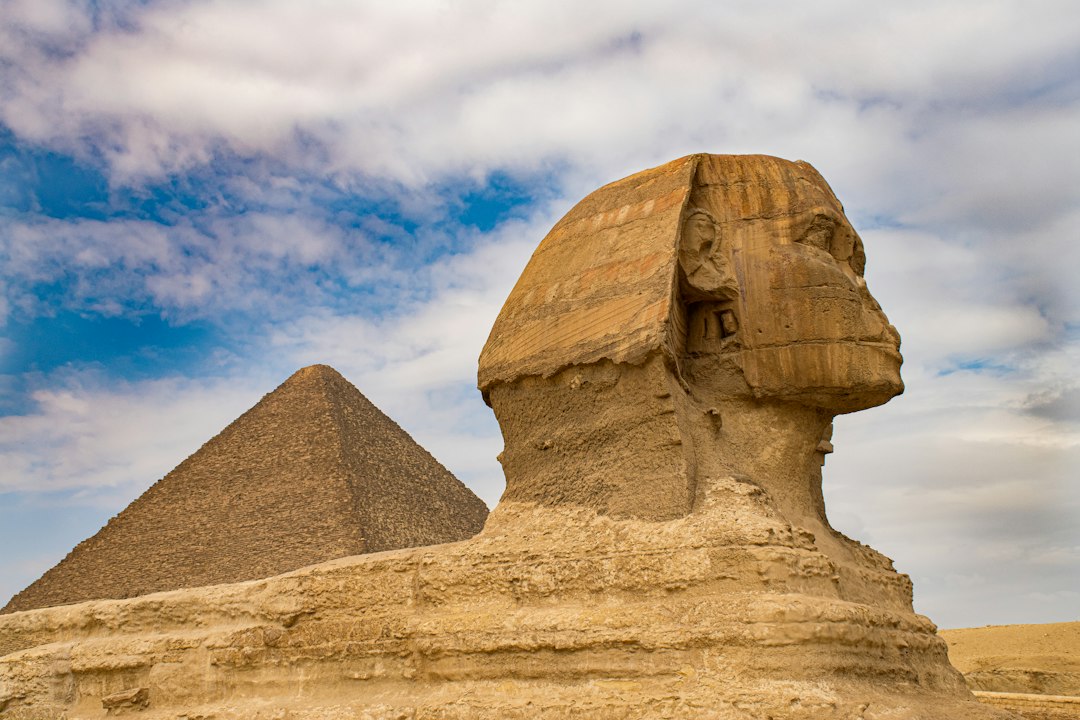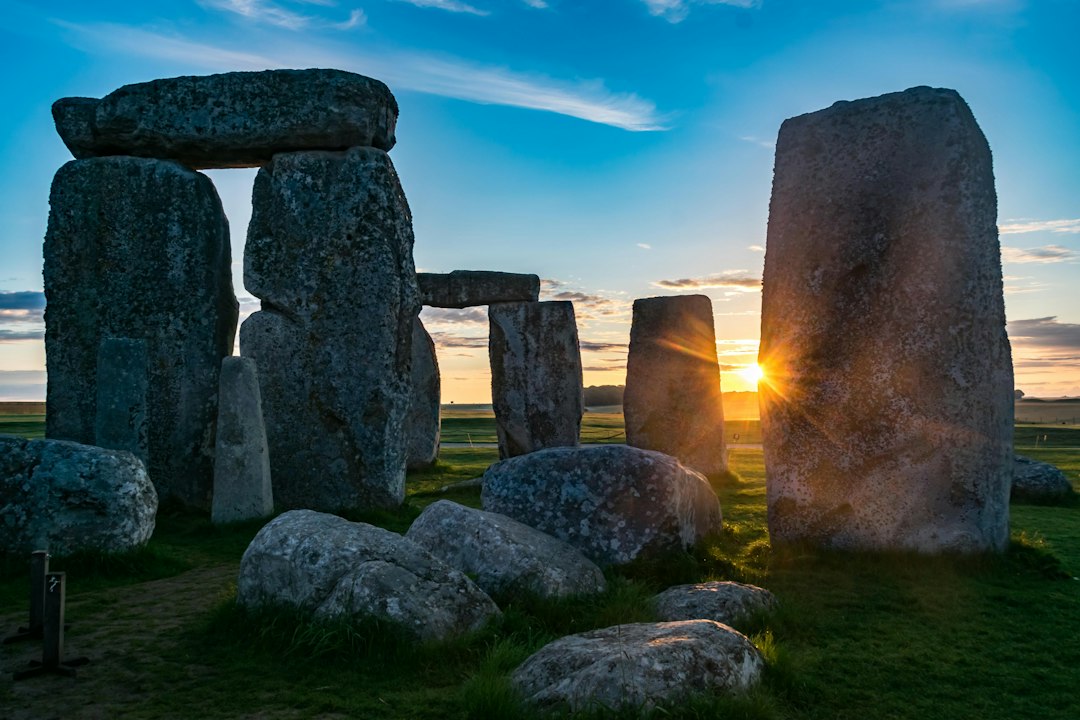Ancient Egypt is one of the most fascinating civilizations in history. It flourished along the banks of the Nile River in northeastern Africa for over 3,000 years, from around 3100 BCE to 30 BCE. The ancient Egyptians were known for their advanced civilization, which included impressive architectural structures, intricate artwork, and a complex religious and cultural system. They left behind a rich legacy that continues to captivate people around the world today.
Key Takeaways
- Ancient Egypt was a civilization that flourished along the Nile River from around 3100 BCE to 30 BCE.
- The Sphinx is a limestone statue with the head of a human and the body of a lion, believed to have been built during the reign of Pharaoh Khafre in the 26th century BCE.
- The Pyramids of Giza were built as tombs for the pharaohs Khufu, Khafre, and Menkaure, and are considered some of the most impressive architectural feats in history.
- The Great Pyramid of Giza is the largest and oldest of the three pyramids, and its construction remains a mystery to this day.
- The Sphinx was likely associated with solar worship, and its alignment with the rising sun on the spring equinox suggests a connection to the renewal of life and the afterlife.
The Sphinx: History and Significance
The Sphinx is one of the most iconic symbols of Ancient Egypt. It is a mythical creature with the body of a lion and the head of a human or animal. The most famous Sphinx is located near the Pyramids of Giza, just outside of Cairo. It is believed to have been built during the reign of Pharaoh Khafre in the Old Kingdom period, around 2500 BCE.
The Sphinx holds great significance in Ancient Egyptian culture. It was seen as a guardian and protector, often placed at the entrance of temples and tombs. The Sphinx was also associated with the sun god Ra, symbolizing his power and authority. Its imposing presence and enigmatic expression have made it a subject of fascination for centuries.
The Pyramids of Giza: Construction and Purpose
The Pyramids of Giza are perhaps the most famous architectural structures in Ancient Egypt. They were built as tombs for the pharaohs, who were believed to be divine rulers. The three main pyramids at Giza were constructed during the Old Kingdom period, around 2600-2500 BCE.
The construction of these pyramids was a monumental feat of engineering. They were built using limestone blocks, which were quarried from nearby areas and transported to the construction site. The blocks were then carefully stacked to create the pyramid shape. The largest pyramid, known as the Great Pyramid, was built for Pharaoh Khufu and is the largest pyramid in Egypt.
The purpose of the pyramids was to serve as a final resting place for the pharaohs. They were believed to be the gateway to the afterlife, where the pharaohs would continue their rule as divine beings. The pyramids were filled with treasures and offerings, including food, clothing, and other items that the pharaoh would need in the afterlife.
The Great Pyramid: Mysteries and Legends
| Category | Metric |
|---|---|
| Construction | Height: 146.5 meters |
| Base length: 230.4 meters | |
| Weight: 6 million tons | |
| History | Built during the reign of Pharaoh Khufu in 2560 BC |
| Believed to be a tomb for the Pharaoh Khufu | |
| Mysteries | How were the massive stones transported and lifted? |
| What was the purpose of the air shafts? | |
| What was the significance of the pyramid’s alignment with the stars? |
The Great Pyramid of Giza is the largest and most famous pyramid in Egypt. It was built for Pharaoh Khufu and is estimated to have been completed around 2560 BCE. The Great Pyramid stands at a height of 481 feet (146 meters) and was the tallest man-made structure in the world for over 3,800 years.
The construction of the Great Pyramid has long been a subject of mystery and speculation. Some theories suggest that it was built using slave labor, while others propose that it was constructed by skilled workers who were well-treated. The exact methods used to build the pyramid are still not fully understood, but it is believed that ramps were used to transport the heavy limestone blocks.
Legends surrounding the Great Pyramid also add to its mystique. One popular legend is that it was built by aliens or advanced civilizations from another planet. Another legend suggests that there are hidden chambers or treasures within the pyramid that have yet to be discovered. While these legends may be intriguing, there is no scientific evidence to support them.
The Sphinx and Solar Worship
The Sphinx has a strong connection to solar worship in Ancient Egypt. The sun god Ra was one of the most important deities in their religious pantheon, and his worship played a central role in their daily lives. The Sphinx, with its lion body and human or animal head, was seen as a representation of Ra’s power and authority.
Solar worship was an integral part of Ancient Egyptian religion. The sun was believed to be the source of life and energy, and the pharaohs were seen as the earthly embodiment of Ra. The Sphinx, with its prominent position near the Pyramids of Giza, served as a symbol of the pharaoh’s connection to the sun god and his divine right to rule.
Theories on the Purpose of the Pyramids

The purpose of the pyramids has been a subject of debate among historians and archaeologists for centuries. There are several theories that attempt to explain their significance in Ancient Egypt.
One theory suggests that the pyramids were built as a way for the pharaohs to assert their power and authority. The massive size and grandeur of the pyramids would have been a clear symbol of the pharaoh’s divine status and his ability to command vast resources.
Another theory proposes that the pyramids were built as astronomical observatories. The alignment of the pyramids with certain stars and constellations suggests that they may have been used to track the movements of celestial bodies and determine important dates and events.
The most widely accepted theory is that the pyramids were built as tombs for the pharaohs. The intricate burial rituals and offerings found within the pyramids support this theory. The pyramids were seen as a gateway to the afterlife, where the pharaohs would continue their rule as divine beings.
The Sphinx and its Mysterious Missing Nose
One of the most enduring mysteries surrounding the Sphinx is its missing nose. The nose is believed to have been broken off sometime in ancient times, but it is unclear exactly when or how this happened.
There are several theories on how the nose was lost. One theory suggests that it was intentionally destroyed by religious zealots who wanted to erase any traces of idol worship. Another theory proposes that it was damaged during a military campaign or by natural causes such as erosion.
While the exact cause of the missing nose remains unknown, its absence has only added to the Sphinx’s enigmatic allure. It serves as a reminder of the passage of time and the fragility of even the most enduring structures.
The Sphinx and the Orion Correlation Theory
The Orion Correlation Theory is a controversial hypothesis that suggests a connection between the layout of the three main pyramids at Giza and the stars in the constellation of Orion. According to this theory, the pyramids were intentionally aligned to mirror the positions of the stars in Orion’s belt.
The theory was popularized by author Robert Bauval in the 1990s and has since gained a significant following. Proponents of the theory argue that the alignment is too precise to be a coincidence and must have been intentional.
However, many archaeologists and Egyptologists dismiss the Orion Correlation Theory as pseudoscience. They argue that there is no evidence to support the idea that the ancient Egyptians had knowledge of astronomy or were capable of aligning their structures with celestial bodies.
The Pyramids and their Alignment with the Stars
While the Orion Correlation Theory may be controversial, there is no denying that the pyramids at Giza are aligned with certain stars and constellations. The alignment of the pyramids with the stars has been a subject of fascination for centuries.
The most famous alignment is between the Pyramids of Giza and the constellation of Orion. The three main pyramids are positioned in a way that mirrors the positions of the stars in Orion’s belt. This alignment suggests a deep connection between the earthly realm and the celestial realm.
The significance of this alignment in Ancient Egypt is still not fully understood. Some theories propose that it was meant to symbolize the pharaoh’s journey to the afterlife, while others suggest that it was used for astronomical observations or as a way to mark important dates and events.
The Sphinx and the Royal Cult of Ancient Egypt
The Sphinx has a strong connection to the Royal Cult in Ancient Egypt. The Royal Cult was a religious and cultural system that centered around the worship of the pharaoh as a divine ruler. The pharaoh was seen as the intermediary between the gods and the people, and his role was to maintain order and harmony in society.
The Sphinx, with its imposing presence and enigmatic expression, served as a symbol of the pharaoh’s power and authority. It was often placed at the entrance of temples and tombs, serving as a guardian and protector.
The Royal Cult played a central role in Ancient Egyptian society. It shaped their religious beliefs, influenced their political structure, and dictated their social hierarchy. The pharaoh was seen as the embodiment of divine power, and his rule was believed to be essential for the well-being of the kingdom.
The Sphinx and the Pyramids of Giza are two of the most iconic symbols of Ancient Egypt. They hold great significance in Egyptian culture and continue to captivate people around the world today. The mysteries and legends surrounding these ancient structures only add to their allure, sparking curiosity and fascination.
While many questions about the Sphinx and the pyramids remain unanswered, they serve as a testament to the ingenuity and skill of the ancient Egyptians. These structures are a testament to their advanced civilization, their complex religious beliefs, and their enduring legacy. As we continue to study and explore Ancient Egypt, we may uncover more secrets and gain a deeper understanding of this remarkable civilization.
FAQs
What is the Sphinx?
The Sphinx is a mythical creature with the body of a lion and the head of a human. It is located in Giza, Egypt, near the Pyramids of Giza.
What are the Pyramids of Giza?
The Pyramids of Giza are a group of three pyramids located in Giza, Egypt. They were built as tombs for the pharaohs Khufu, Khafre, and Menkaure.
When were the Pyramids of Giza built?
The Pyramids of Giza were built during the Old Kingdom period of Ancient Egypt, between 2580 and 2560 BC.
How were the Pyramids of Giza built?
The Pyramids of Giza were built using large blocks of limestone that were quarried from nearby areas. The blocks were then transported to the pyramid site and stacked on top of each other to form the pyramid shape.
Why were the Pyramids of Giza built?
The Pyramids of Giza were built as tombs for the pharaohs Khufu, Khafre, and Menkaure. It was believed that the pharaohs would be able to continue their lives in the afterlife if their bodies were preserved and their tombs were filled with treasures.
What is the significance of the Sphinx?
The Sphinx is significant because it is one of the largest and oldest statues in the world. It is also significant because it is believed to have been built during the reign of the pharaoh Khafre, who also built one of the Pyramids of Giza.







